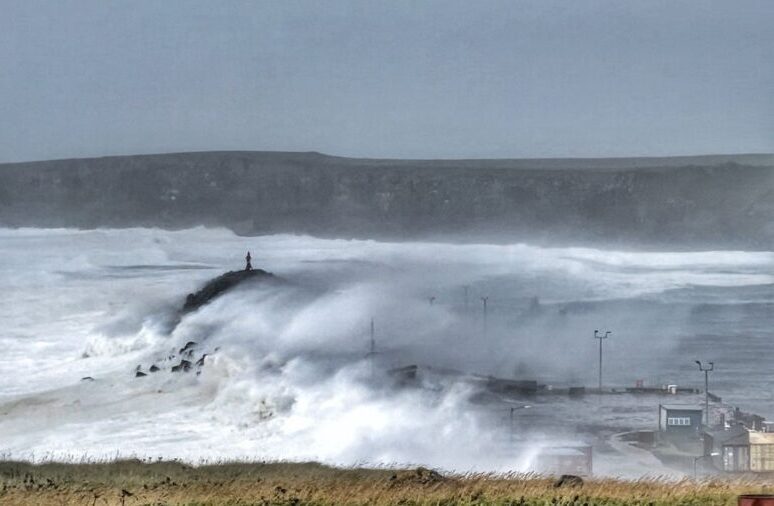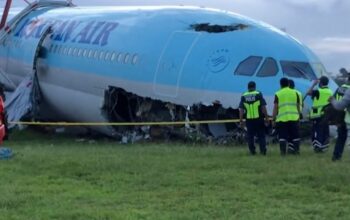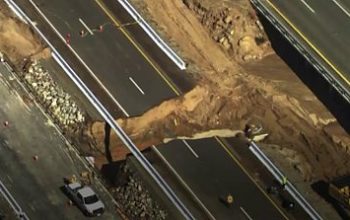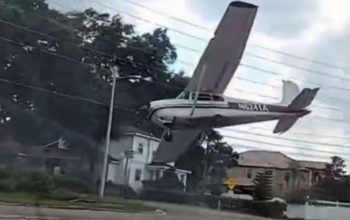The Alaska storm formerly known as Typhoon Merbok wreaks havoc in western Alaska pulling homes from their foundations
The following written content from Emily Schwing and Mike Baker

Communities along Alaska’s western coast faced widespread flooding on Saturday as a powerful storm — the remnants of Typhoon Merbok — roared across the Bering Sea, with wind gusts tearing the siding off buildings and a storm surge pulling homes from their foundations.
The impact was felt across hundreds of miles of coastline as the storm raked the state from south to north. In Nome, raging waters pushed into six of the city’s streets, including part of Front Street, near where mushers finish the Iditarod sled-dog race. In Chevak, about 200 miles south, images showed sheds floating in tumbling waves next to sunken boats.
In Golovin, about 70 miles east of Nome, Dean Peterson said water had jumped the 20-foot berm that protects the community of 170 people, rushing through the lower-lying areas, pulling three homes from their foundations and destroying another.
People in the community scrambled to rescue an older adult from his home, and many evacuated to take shelter in the school, which itself was not fully protected.
“The school is completely surrounded by water,” Mr. Peterson said. He said he did not know of any injuries.
John Handeland, the mayor of Nome, said Saturday afternoon that there were no reports of injuries in his community, but that the storm surge had flooded several roads, pushing driftwood and debris into town. An unoccupied home was taken by the waters, and one waterfront road was at least partially washed away.
John Handeland, the mayor of Nome, said Saturday afternoon that there were no reports of injuries in his community, but that the storm surge had flooded several roads, pushing driftwood and debris into town. An unoccupied home was taken by the waters, and one waterfront road was at least partially washed away.
“It will be a few days before we can totally analyze the level of destruction,” he said.
On Saturday morning, water levels were seven to nine feet above normal in Nome, where the population is less than 10,000, according to the National Ocean Service, a division of the National Oceanic and Atmospheric Administration.
Coastal flood warnings in some areas remained in effect through Sunday morning, National Weather Service officials in Alaska said. In the Koyuk area, about 130 miles east of Nome, water levels could still reach 12 to 18 feet above normal tide lines, they said.
Forecasters said the storm’s size and strength made it one of the most powerful systems to move through the Bering Sea area in decades, with waves north of the Aleutian Islands peaking at 50 feet on Friday. Many communities experienced wind gusts that were close to hurricane strength.
Brian Brettschneider, a climatologist based in Anchorage, said global warming had likely contributed to the severity of the storm. The explosive development of storms this far north is atypical, he said, because water temperatures are normally too cold to allow tropical cyclones to form.

“There’s a strong argument to be made that climate change tipped the scales to favor this storm,” he said.
Sea surface temperatures recorded along Alaska’s western coast were at or near record highs, Mr. Brettschneider said. “We can say that climate change will increase the likelihood that all these ingredients are in place at the same time,” he said, “and it’s not unreasonable to assume these types of storms will become more frequent.”
Emergency responders from local, state, federal and tribal agencies were assessing the situation and preparing to deploy. The region includes many communities with small populations — a few hundred people or less — and that are not connected by roads, making a broad response challenging. Emergency responders from local, state, federal and tribal agencies were assessing the situation and preparing to deploy. The region includes many communities with small populations — a few hundred people or less — and that are not connected by roads, making a broad response challenging.
Jeremy Zidek, a spokesman for the state’s Division of Homeland Security and Emergency Management, said Saturday that the agency had not yet received any emergency requests or reports of deaths or injuries.
“People had a lot of warning, and they took a lot of precautionary measures,” he said. Read more from NYT





